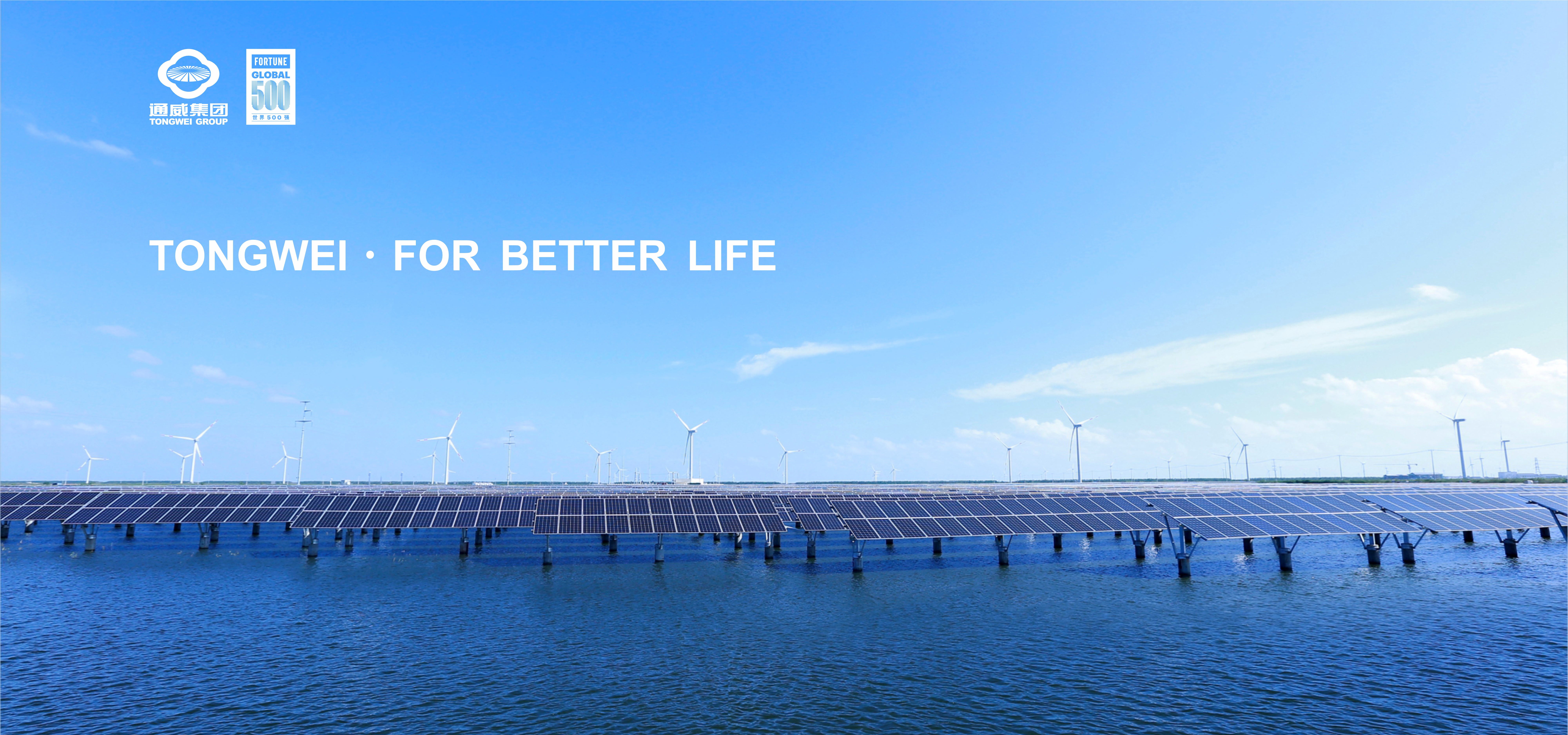2025-06-05
To allow the public to directly experience the charm of PV technology, learn and understand PV, and stimulate interest in exploring the relevant field, Tongwei Group has meticulously planned and launched the "Carbon Pioneer, Green Future" global headquarters and PV intelligent manufacturing base research and study program. Through visits to exhibition halls and intelligent production workshops across various bases, it meets the public's demand for science education while unlocking the code to a green future.
Fifth Stop | Tongwei's "Fishery & PV Integration" Base
Located in the Tianfu Agricultural Expo Park in Xinjin District, Chengdu, lies a unique photovoltaic power station—the Tongwei Fishery-Solar Demonstration Park. Here, PV panels are neatly arranged on the water's surface, absorbing sunlight and generating clean energy. Beneath the panels, people explore the synergy between light and fish. On the exhibition hall screens, AR animations depict the magical journey of photovoltaics changing the world. The Tongwei "Fishery & PV Integration" Base is opening a door to a carbon-neutral future for the public across the country with its "technology + ecology" dual-helix code.

A Symphony of Technology and Nature: A Visible Energy Revolution
Entering the Fishery & PV Demonstration Area, visitors can observe the efficient synergy of "power generation on water, fish farming under water": the spacing between photovoltaic supports is precisely calculated to ensure light penetrates the water surface, creating the best light environment for fish farming. High-clearance, large-span photovoltaic supports create ample space under the panels. The photovoltaic arrays on the water continuously absorb sunlight and convert it into green electricity, benefiting countless households and writing a green story of "chasing light and pursuing green."

Each mu (≈0.067 hectares) of the fishery-PV system reduces carbon emissions equivalent to about 300 trees per year. When converting the power generation into annual carbon reduction capacity, the abstract "dual carbon" goals become more concrete. This "blue sea of PV panels" is not only a power station for clean energy but also a guardian of ecological balance—the sunlight passing through the panels creates the best growth environment for fish, the intelligent feeding system reduces feed waste, and the water's oxygen content is further improved compared to traditional fish ponds.

Here, technology and nature dance together, vividly interpreting the deepest love for the land beneath our feet.
From a grain of sand to carbon neutrality: tangible low-carbon enlightenment
In the "Fishery & PV Integration" exhibition hall, AR animations transform the progression from a grain of sand to a photovoltaic panel into a technologically advanced "magic of light," captivating visitors.

Visitors can learn about low-carbon behaviors in daily life by simply entering data into the low-carbon calculator, allowing everyone to understand that saving a piece of floating ice for polar bears might start with turning off a light; adhering to raising the air conditioning temperature by 1°C, eating a vegetarian meal every week, and always carrying an environmental protection bag in the schoolbag, the accumulated carbon reduction for a year is enough to fill the entire exhibition hall.

Carbon neutrality is never a grand narrative, it is the glimmer of photovoltaic panels in the morning light and the green promise that sprouts from the heart.
The Sunshine Code on Wheels: Measurable Green Trajectory
In the creative practice class, students transform into "DIY" experts, assembling solar-powered cars independently. "Why do PV panels need to be tilted at 25 degrees?" The instructor uses the array design of the fish pond as an example, explaining that the principle of light refraction is like sunflowers turning to follow the sun. With the right angle, energy comes.

"Energy conversion is not brute force, and balance and efficiency are key." As the cars gradually take shape, the solar-powered cars are poised at the starting line. Sunlight becomes the fairest judge, with the panel accurately capturing every ray of light. Those light spots rolling with the wheels are now quietly entering the depths of the young people's pupils.
At this moment, physical formulas are no longer symbols on paper but the green trajectory of the wheels.
At the Tongwei "Fishery & Solar Integration" base, when everyone understands the "PV code" in the fish pond, when physical formulas meet running solar-powered cars, and when "dual carbon" knowledge becomes a part of daily life, what we see is not only the growth of knowledge but also the witness of a nation's sustainable development future, which is growing vigorously on this land full of light energy.


Tongwei's base achieves high-efficiency synergy between PV and agriculture. It enables public engagement with green energy while demonstrating modern fishery development, standing as a pivotal "dual-carbon" education hub—a carbon-neutrality themed park where learning meets leisure through "fishery-edutainment." Currently, these bases host study tours from institutions like Tsinghua University, the University of Electronic Science and Technology of China, Chengdu No.7 High School, and Chengdu Experimental Foreign Languages School. These activities promote green development concepts, explore innovative "dual carbon" development models, and contribute to a sustainable future.
One-click reservation
Tongwei's high-purity crystalline silicon, solar cells, high-efficiency modules, etc.
Science bases will be opened sequentially
Inviting you to explore PV together
Scan the QR codes below

to make a reservation to visit
Tongwei Group Global Headquarters & PV Intelligent Manufacturing Base
For more information about Tongwei Science Education Bases
please stay tuned for the "Tongwei PV Science Education Map" series

